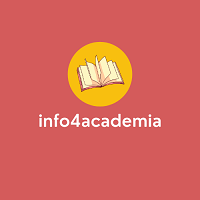Analyzing Savings Behavior Among University Students: A Case Study of Bank's Financial Education Initiatives
Abstract
This study investigates the impact of Maybank’s Financial Education Initiatives and financial goal-setting on the savings behavior of university students. Utilizing both primary and secondary data, the study aims to determine how financial education and the establishment of measurable financial goals influence students' savings habits. Primary data was collected through an online survey distributed to 200 university students using a Five-Point Likert Scale to measure responses regarding their participation in financial education programs, financial goals, and savings behavior. Secondary data was sourced from relevant academic journals focusing on accounting and finance research in the Asia Pacific region. The results reveal that both financial education and goal-setting significantly influence savings behavior, with financial goals exhibiting a stronger effect. Regression analysis shows that financial goals (? = 0.386) have a higher impact on savings than Maybank’s Financial Education Initiatives (? = 0.270). The study concludes that while financial literacy is crucial, goal-setting plays a more pivotal role in promoting consistent saving behavior. The findings imply that financial literacy programs should integrate goal-setting strategies to maximize their effectiveness in fostering long-term financial responsibility among students.
Keywords
Full Text:
PDFReferences
Astiti, N. P. Y., Warmana, G. O., & Hidayah, M. (2019). Financial literation and investment decision behavior of entrepreneurs in Bali. International Journal of Applied Business and International Management, 4(3), 64-68. https://doi.org/10.32535/ijabim.v4i3.683
Barr, M. J., & McClellan, G. S. (2018). Budgets and Financial Management in Higher Education. John Wiley & Sons.
Bernd, D. C., Beuren, I. M., Pazetto, C. F., & Lavarda, C. E. F. (2021). Antecedents of commitment to budgetary goals. Revista de Administração Contemporânea, 26(02), e200018. https://doi.org/10.1590/1982-7849rac2022200018.en
Bhatia, P. (2024, July 14). How can single women build emergency funds? Here are 6 key ways. Mint. https://www.livemint.com/money/personal-finance/how-can-single-women-build-emergency-funds-here-are-6-key-ways-saving-investing-financial-literacy-11720513790573.html
Castleman, B., & Meyer, K. (2019). Financial constraints & collegiate student learning: A behavioral economics perspective. Daedalus, 148(4), 195-216. https://doi.org/10.1162/daed_a_01767
Fernandez, K. (2022). Finance and Investing for the Long Run: Investing for Young Adults to Make the Most of Their Money. Abiprod Pty Ltd.
Guan, A. K. (2024). The study of the impact of financial goal setting on personal investment performance. Research Gate. http://dx.doi.org/10.13140/RG.2.2.33273.07524
Iradianty, A., & Sitorus, P. M. (2024). Design analysis to enhance financial education for student entrepreneurs in university. Asia Pacific Journal of Management and Education, 7(2), 58-70. https://doi.org/10.32535/apjme.v7i2.2988
Lusardi, A., & Mitchell, O. S. (2014). The economic importance of financial literacy: Theory and evidence. American Economic Journal: Journal of Economic Literature, 52(1), 5-44. https://doi.org/10.1257/jel.52.1.5
Lusardi, A., Mitchell, O. S., & Curto, V. (2010). Financial literacy among the young. Journal of Consumer Affairs, 44(2), 358-380. https://doi.org/10.1111/j.1745-6606.2010.01173.x
Lusardi, A., & Tufano, P. (2015). Debt literacy, financial experiences, and overindebtedness. Journal of Pension Economics & Finance, 14(4), 332-368. https://doi.org/10.1017/S1474747215000232
Maybank Group. (2022, February 16). Maybank's Cashville Kidz financial literacy programme continues to empower students nationwide during challenging times. Maybank. https://www.maybank.com/en/news/2022/02/16.page
Montalto, C. P., Phillips, E. L., McDaniel, A., & Baker, A. R. (2019). College student financial wellness: Student loans and beyond. Journal of Family and Economic Issues, 40(1), 3-21. https://doi.org/10.1007/s10834-018-9593-4
Peeling, N. (2012). Brilliant Retirement: Everything You Need to Know and Do to Make the Most of Your Golden Years. Pearson UK.
Petty, J. W., Titman, S., Keown, A. J., Martin, P., Martin, J. D., & Burrow, M. (2015). Financial Management: Principles and Applications. Pearson Higher Education AU.
Ponchio, M. C., Cordeiro, R. A., & Gonçalves, V. N. (2019). Personal factors as antecedents of perceived financial well-being: Evidence from Brazil. International Journal of Bank Marketing, 37(4), 1004-1024. https://doi.org/10.1108/IJBM-03-2018-0077
Putri, H. R., Bailusy, M. N., & Hadady, H. (2021). Generation Z: Financial literacy, sharia financial literacy, attitude, and behavior. International Journal of Applied Business and International Management, 6(3), 46-55. https://doi.org/10.32535/ijabim.v6i3.1328
Satoto, S. H., & Putra, H. N. K. (2021). The effect of financial literacy and other determinants on the intention to use electronic money: Consumer behavior as a variable mediation. International Journal of Applied Business and International Management, 6(3), 23-34. https://doi.org/10.32535/ijabim.v6i3.1326
Shim, S., Barber, B. L., Card, N. A., Xiao, J. J., & Serido, J. (2010). Financial socialization of first-year college students: The roles of parents, work, and education. Journal of Youth and Adolescence, 39, 1457-1470. https://doi.org/10.1007/s10964-009-9432-x
Simonse, O., Van Dijk, W. W., Van Dillen, L. F., & Van Dijk, E. (2024). Economic predictors of the subjective experience of financial stress. Journal of Behavioral and Experimental Finance, 42, 100933. https://doi.org/10.1016/j.jbef.2024.100933
Tang, N., & Baker, A. (2016). Self-esteem, financial knowledge and financial behavior. Journal of Economic Psychology, 54, 164-176. https://doi.org/10.1016/j.joep.2016.04.005
Tooze, A. (2018). Crashed: How a Decade of Financial Crises Changed the World. Penguin.
Wahyuni, S. F., Radiman, R., & Nara, R. (2022). The influence of financial literacy, financial behavior, and income on investment decisions (2018 student case study for Management Study Program Universitas Muhammadiyah Sumatera Utara). Journal of International Conference Proceedings, 5(2), 469-479. https://doi.org/10.32535/jicp.v5i2.1709
Xiao, J. J., & O'Neill, B. (2016). Consumer financial education and financial capability. International Journal of Consumer Studies, 40(6), 712-721. https://doi.org/10.1111/ijcs.12285
Zapp, D. (2019). Money Matters on Campus. Everfi. https://everfi.com/wp-content/uploads/2019/05/MoneyMatters-2019.pdf
DOI: https://doi.org/10.32535/ijafap.v7i3.3617
Refbacks
- There are currently no refbacks.
Copyright (c) 2024 Kok Ban Teoh, Saurabh Ravindra Nerkar, Sakshi Ajay Darware, Siti Nazurah binti Mohd Zaki, Nur Ain Afiqah Binti Mohd Taufik, Haziqzul Najmi Bin Abdullah, Zhang Renyue, Charu Padam, Daisy Mui Hung Kee

This work is licensed under a Creative Commons Attribution-NonCommercial-ShareAlike 4.0 International License.
International Journal of Accounting and Finance in Asia Pacific (IJAFAP)
ISSN 2684-9763 (Print) | ISSN 2655-6502 (Online)
DOI Prefix: 10.32535 by CrossRef
Published by AIBPM Publisher
JL. Kahuripan No. 9, Hotel Sahid Montana, Malang, Indonesia
Email: adm.ijafap@gmail.com
Phone: +62 341 366222
Website: https://ejournal.aibpmjournals.com/index.php/IJAFAP
Governed by
Association of International Business and Professional Management
Email: admin@aibpm.org
Website: https://www.aibpm.org/
Licensing Information

International Journal of Accounting and Finance in Asia Pacific (IJAFAP) is licensed under a Creative Commons Attribution-NonCommercial-ShareAlike 4.0 International License.
















